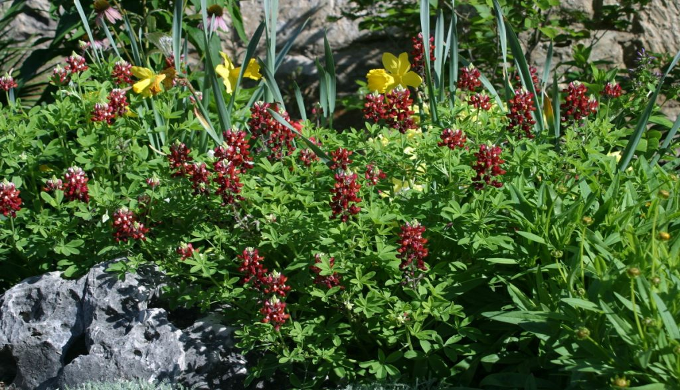 Aggie Horticulture
Aggie Horticulture
Nature
Aggie Bonnets: Texas A&M’s Maroon Bluebonnet
Imagine you are a University of Texas Austin student, and you wake up one spring morning ready to start out your day. You walk outside and are excited to see the bluebonnets making their presence known around campus. Then you walk by the tower and begin to wonder if you ended up at the wrong school. I mean, why else would there be maroon bluebonnets popping up amongst the more traditional bluebonnets? After recounting last night’s events, you come to conclusion that you are indeed still on UT’s campus. You shake your fist at the sky and exclaim, “Oh, you Aggies! Revenge will be ours!” I’m sorry imaginary UT student. This one must have burned you to the core.
 Photo: ABC 13
Photo: ABC 13
While this scenario is made up, the discovery of maroon bluebonnets growing around the University of Texas Austin’s tower was real. In April 2014, maroon bluebonnets started popping up around the UT Tower (and only around the tower). While it is suspected that Aggies had something to do with the occurrence, it remains only a rumor. However, I am going to give credit where credit is due. If it was in fact Texas A&M’s doing, they win the award for creativity.
Now, rivalries aside, how did the maroon bluebonnet come to be? Back in the 1982, before most current Aggie and UT students were born, a man by the name of Dr. Jerry M. Parsons was challenged with the task of designing the Texas State Flag entirely out of bluebonnets. There was only one problem. Red bluebonnets do not exist. So, Dr. Parsons, being the genius that he is, decided he would create a red bluebonnet.
 Photo: Chron
Photo: Chron
Dr. Parsons came to the conclusion he needed a pink bluebonnet. This was not an easy task, since the pink bluebonnet was so rare. However, he did eventually find the perfect pink bluebonnet right inside San Antonio’s city limits. He was able to scrounge up some of the seeds before the roadside embankment was completely demolished for grading. Dr. Parsons immediately went to work performing his Aggie magic on the seed. He found that only 12% of the seeds collected from the pink plants would bloom pink. After some time, Dr. Parsons was able to coerce the little plants to produce only pink blooms, but with variations. These variations included the maroon bluebonnet that UT students have come to loathe.
Source:


